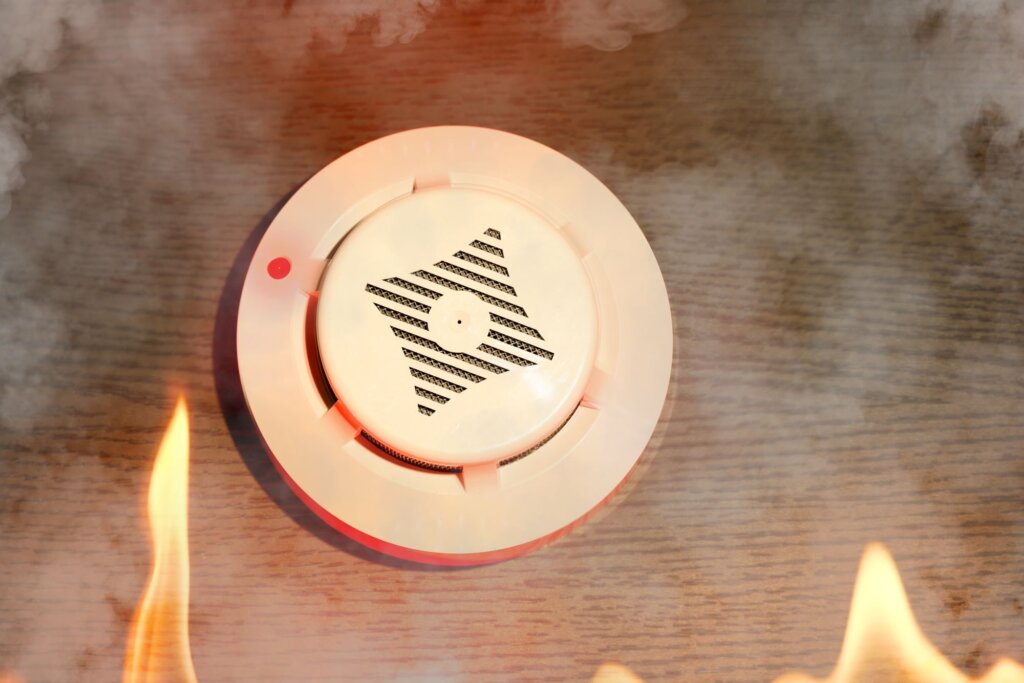Safety in your home is extremely important, and one essential safety task is the regular testing of smoke and carbon monoxide (CO) detectors. Second to practicing proper fire safety, smoke and CO detectors are your next line of defense in case of a potentially life-threatening situation. Knowing how to test them correctly and check if they’re working can make all the difference. Whether you own or rent your home, you should be testing your smoke and carbon monoxide detectors regularly.
Testing Smoke Detectors
If your home or something in your home catches on fire, the flames and smoke can spread quickly. In many instances, you only have a few precious minutes to get out of the house unharmed. A working smoke detector can alert you and your family immediately if it detects that something is producing smoke. Here are the steps to take when testing your smoke detectors:
1. Locate Your Smoke Detectors
First, identify where your smoke detectors are located in your home. They are typically installed in all bedrooms, hallways, and near the kitchen. There should be smoke detectors on each level of the home.

2. Press the Test Button
Most smoke detectors have a dedicated “Test” button. Press and hold it for a few seconds until you hear a loud, continuous beep. This beeping sound indicates that the smoke detector alarm is functioning correctly. If the sound does not go off or is weak, it may be time to change the batteries or replace the detector.
3. Check ALL Alarms
Ensure that all smoke detectors in your home produce a sound when tested. If any detector doesn’t respond, replace the batteries or the entire unit if necessary.
4. Regular Testing
It’s generally advisable to test your smoke detectors at least once a month.
Testing Carbon Monoxide Detectors
Carbon monoxide is considered a “silent killer,” because it is poisonous gas that cannot be seen, smelled, heard, or tasted. The most common culprits for carbon monoxide in the home include gas ovens, furnaces, and fireplaces. Many people don’t realize the effects of CO poisoning until they are severe or life-threatening. Having a functioning CO detector in your home can alert you to the presence of carbon monoxide before it’s too late. Here are the steps to take when testing a CO detector.
1. Locate Your Carbon Monoxide Detectors
Carbon monoxide detectors are typically mounted on the wall near bedrooms and by heating appliances like gas furnaces or fireplaces. Some homes may have combined smoke and CO detectors. There should also be at least one on each floor if needed.
2. Press the Test Button
Similar to smoke detectors, carbon monoxide detectors also come with a “Test” button. Press and hold it until you hear four loud alarm-like beeps, then a pause, and then four more beeps. This sound indicates that the CO alarm is operating correctly.
3. Verify Functionality
Confirm that all carbon monoxide detectors in your home produce a sound when tested. If any alarm doesn’t respond or makes a weak sound, replace the batteries or the entire unit, if necessary. If your CO detector starts beeping once every minute, the batteries may need to be replaced.
4. Regular Testing
Test your carbon monoxide detectors at least once a month, just like smoke detectors. However, a working CO alarm does not always mean that the device is correctly detecting carbon monoxide. If you would like to test the detection accuracy, contact a local HVAC professional who provides this service.
Additional Tips:
- Battery Replacement: Change the batteries in your smoke detectors and carbon monoxide alarms at least once a year, or as recommended by the manufacturer. If you rent and your detector needs a special battery, contact your landlord or property manager.
- Vacuum Regularly: Dust and debris can accumulate inside these devices, affecting their functionality. Use a vacuum cleaner with a soft brush attachment to clean them periodically.
- Listen for chirps or beeps: If you hear a chirp from your smoke or carbon monoxide detector, it may mean the battery is low and needs to be replaced. Other causes for chirping could be dust in the sensor or an indication that the entire alarm needs to be replaced.
Taking a few minutes each month to test your smoke and carbon monoxide detectors can greatly improve the safety of your home. These simple steps can make a significant difference in protecting you and your loved ones from potential hazards.
This article is meant for informational purposes only. If you have further questions or concerns about smoke or CO detectors, contact an HVAC or fire safety professional.
